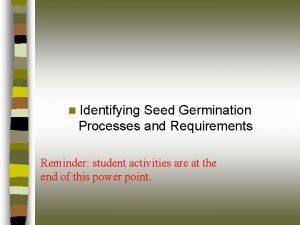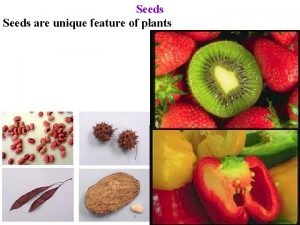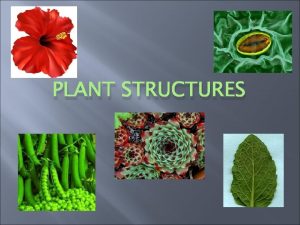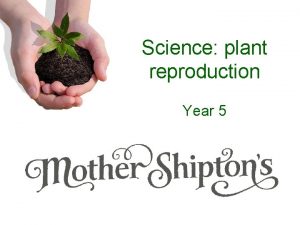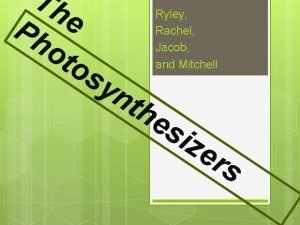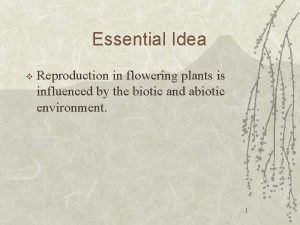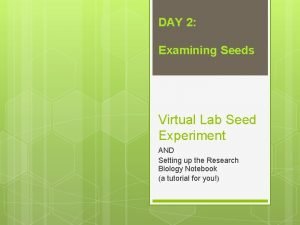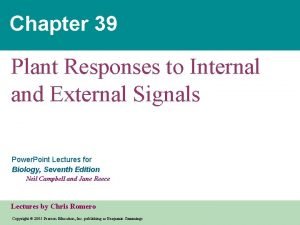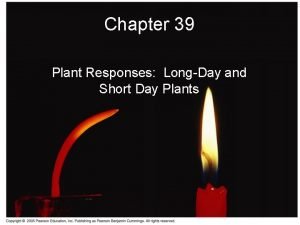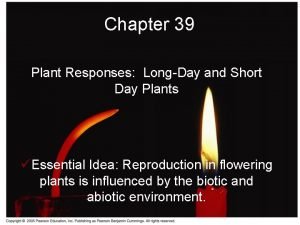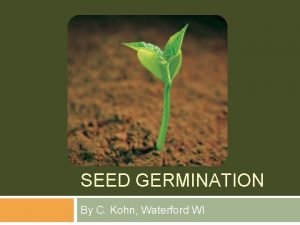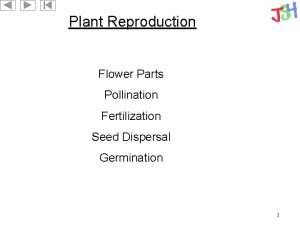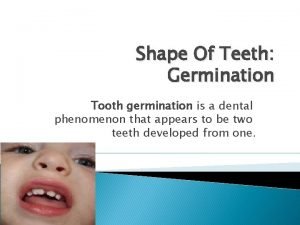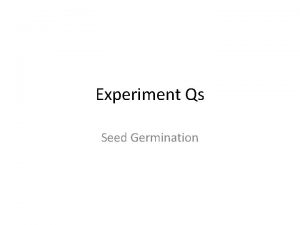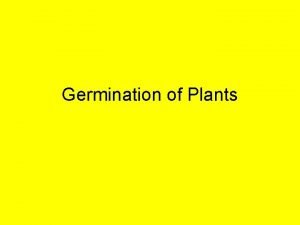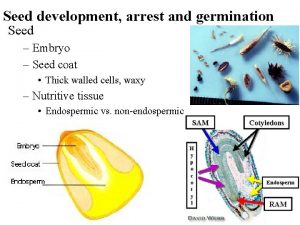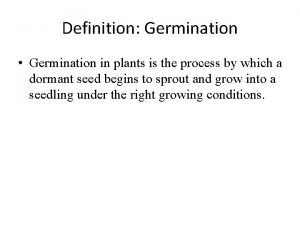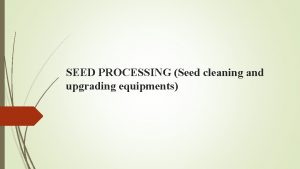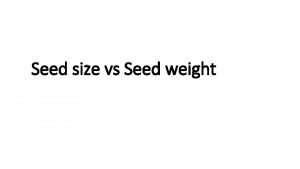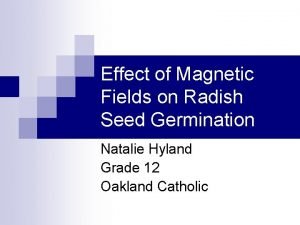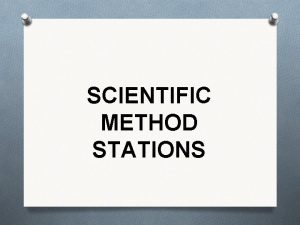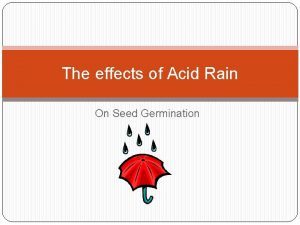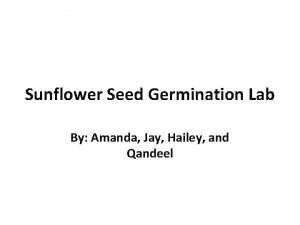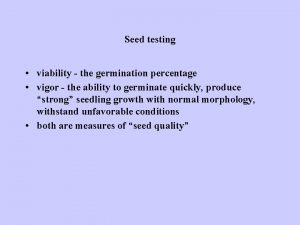SEED GERMINATION Contents Introduction Structure Of Seed Process


















- Slides: 18

SEED GERMINATION

Contents ØIntroduction. ØStructure Of Seed. ØProcess Of Germination. ØTypes Of Germination. ØMetabolism During Germination. ØMobilization Of Reserve Food During Germination. ØHarmonal Control During Seedling Growth. ØReferences

Introduction • Germination is the first stage of the making of the seedling. • Underfavourable conditions the seed beings to germinated and the embryonic tissues resume growth developing towards a seedling. Structure Of Seed A seed consists of three parts: • A Dormant embryo, A storage tissue & A seed coat.

Process Of Seed Germination : During seed germination physiological and morphological changes – 1. Available of essential germination factors and water absorption. 2. Embryo is activated by imbibition of water. 3. Gibberellin produced in the embryo. 4. DNA present in nucleus of embryo cells is activated by gibberellin. 5. m. RNA synthesis in activated DNA segments.

6. Gibberellin moves to aleurone layer. 7. Gibberellin induces synthesis of digestive enzyme hydrolases, αamylase, protease etc. 8. These enzymes convert starch into sugar and protein into amino acid including tryptophan. 9. Tryptophan produced by proteases activity is translocated to the coleoptile tip. 10. In the coleoptile tip it is converted in to IAA. 11. The coleoptile cell wall becomes weakened. 12. Water taken up and the cells enlarge.

13. Available of soluble food substances respiration rate is become high. 14. Combined effect of respiration and imbibition of water seed coat burst and sprout of radicle. 15. The part of the plant emerges from the seed first is the embryonic root, termed radicle or primary root. 16. This allow the seedling to become anchored in the ground and start absorbing water. 17. After the root absorbs water the embryonic shoot emerges from the seed.

Types of germination 1. Epigeal germination: § In epigeous germination, the hypocotyl elongated and forms a hook, pulling rather than pushing the cotyledons and apical meristem through the soil. e. g. Beans, Tamarind, Papaya etc. 2. Hypogeal Germination: § The epicotyl elongates and forms the hook in this type of germination, the cotyledons stay underground where they eventually decompose. e. g. Peas etc.

Metabolism during seed germination Respiration : - § Respiration during seed germination is divided in three successive phases in most cases Phase I- The respiration rate continuous to increase. Phase II- The respiration rate is maintained at a fairly constant level. Phase III- There is a further sharp increase in respiration.

Changes In Nucleic Acid: § Time of seed germination in interspecies different and it is depend on synthesis of nuclic acid in embryo of germinating seed. § Payne (1976) recorded in Triticum durum that during 24 hour only a small amount of nuclic acid synthesized. § As is the case with nucleic acids soluble nucleotide content of the embryonic axis and of whole seedling increase after 48 hrs. § While that of scutellum and endosperm remains unchanged.

Mobilization of reserve food -Seed of most plant have food reserves from which substrates for germinating growth are derived. -Reserved food found as storage form-Fats, Protein, and Starch stored in endosperm as a reserved food. -Mobilization of storage reserves define as the utilization of starchy endosperm during the germination.

• Cereal grains can be divided into three parts: the embryo, the endosperm, and the fused testa-pericarp. The embryo which will grow into the new seedling, has a specialized absorptive organ, the scutellum. The endosperm is composed of two tissues: the centrally located starchy endosperm and the aleurone layer. ` §The sole function of the aleurone layer of the cereal grains appears to be the synthesis and release of hydrolytic enzyme in to the starchy endosperm during germination. §Two enzymes responsible for starch degradation are α amylase and β amylase. §α amylase hydrolyzes starch chains internally to produce oligosaccharide consisting of α-1, 4 -linked glucose residues. §β amylase degrades these oligosaccharides from the ends to produce maltose a disaccharide. §Maltase then converts maltose to glucose.

1. Starch Water soluble oligo saccharide α amylase Maltose Maltase 2. Protein proteinase 3. Lipid lypase β amylase Maltose glucose peptide Peptidase Glycerol + Fatty acid Amino acid

Starch Degradation in Endosperm

Hormonal Control During Seedling Growth The growth of seedling is the control of cellular activities It is regulated by plant hormones like – Auxins, Ethylenes, Gibberellins, Cytokinins, ABA. • Auxins- Auxins effect on cell division and elongation. Auxins binding site located outside the Pm. Adsorption of IAA Initiate ion movement Acidification of the medium Change in mechanical properties of cell wall and composition of nuclic acid

• Ethylene- The physiology of growth of dark grown seedling are dislocated to some degree of ethylene. - Formation of apical hook in etiolated seedlings is to some extent modulated by ethylene. • Gibberellins- Gibberellins control the growth of hypocotyl and internodes elongation. - GA related mutants identified in Arabidopsis. • ABA- Was initially classified as a hormone that generally inhibits the normal growth of plant organs or reverse the action of other growth hormone. • Cytokinin- The growth of seedling root and shoot is under the control of endogenous cytokinins.

ØDecline in ABA production. ØIncreases in GA production

References: 1. Plant physiology - Lincoln Taiz & Eduardo Zeiger 2. Advanced plant physiology – A. Hemantaranjan 3. Plant physiology & biochemistry – Srivastava. 4. Developmental biology of flowering plants – V. Raghavan 5. Blackwell Scince, http: //www. newphytologist 6. 2005 PD Dr. Gerhard Leubner- http: //www. seedbiology. de

 Seed germination process
Seed germination process Dicot seed germination diagram
Dicot seed germination diagram Observation of seed germination day by day
Observation of seed germination day by day Is sunlight necessary for seed germination
Is sunlight necessary for seed germination Conclusion for seed germination
Conclusion for seed germination Vessel elements
Vessel elements Pollination fertilisation seed dispersal germination
Pollination fertilisation seed dispersal germination Rachel ryley
Rachel ryley Day by day seed germination observation chart
Day by day seed germination observation chart Angiosperms double fertilization
Angiosperms double fertilization Seed germination virtual lab
Seed germination virtual lab Chapter 39 plant responses to internal and external signals
Chapter 39 plant responses to internal and external signals Seed germination
Seed germination Seed germination
Seed germination Factors affecting seed germination ppt
Factors affecting seed germination ppt Factors affecting seed germination
Factors affecting seed germination Seed
Seed Contents introduction
Contents introduction Germination tooth
Germination tooth
